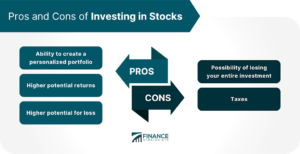ETF Investing: A Low-Cost and Diversified Approach to Investing

ETF Investing: A Low-Cost and Diversified Approach to Investing
Exchange-Traded Funds (ETFs) have gained immense popularity among investors due to their low cost, simplicity, and diversification. An ETF is a type of investment fund that trades on stock exchanges like individual stocks. It allows investors to invest in a portfolio of assets such as stocks, bonds, and commodities in a single transaction.
This article will provide an overview of ETFs, how they work, their benefits, and drawbacks. We will also discuss the different types of ETFs and how to invest in them.
What Are ETFs?
ETFs are investment funds that are traded on exchanges like stocks. They provide investors with exposure to a basket of assets such as stocks, bonds, or commodities in a single transaction. ETFs aim to track the performance of an underlying index, commodity, or group of assets. The prices of ETFs fluctuate throughout the trading day, just like individual stocks.
ETFs are designed to offer diversification benefits, low costs, and ease of trading. The diversification benefits come from the fact that investors can gain exposure to a range of assets through a single ETF, reducing the risk associated with investing in a single asset. The low costs come from the fact that ETFs typically have lower expense ratios than actively managed funds. The ease of trading comes from the fact that ETFs can be bought and sold like stocks, and their prices are updated throughout the trading day.
How Do ETFs Work?
ETFs are created and managed by asset management companies. The process of creating an ETF involves purchasing a basket of assets that match the underlying index or group of assets the ETF aims to track. These assets are held by a custodian on behalf of the ETF. The asset management company then creates new shares of the ETF, known as creation units, which are sold to authorized participants. These creation units can then be bought and sold on an exchange like stocks.
When investors buy and sell shares of an ETF, the market price of the ETF is determined by supply and demand on the exchange. The market price of an ETF may not always be equal to its net asset value (NAV), which is the total value of the assets held by the ETF divided by the number of outstanding shares. If the market price is higher than the NAV, the ETF is said to be trading at a premium. If the market price is lower than the NAV, the ETF is said to be trading at a discount.
The Benefits of ETF Investing
There are several benefits to investing in ETFs:
1. Diversification
ETFs provide investors with exposure to a diversified portfolio of assets in a single transaction. This diversification helps to reduce the risk associated with investing in a single asset.
2. Low Costs
ETFs typically have lower expense ratios than actively managed funds. This is because ETFs are designed to track an underlying index, which requires less management than an actively managed fund.
3. Tax Efficiency
ETFs are generally more tax-efficient than actively managed funds. This is because ETFs typically have lower turnover than actively managed funds, which means they generate fewer capital gains.
4. Transparency
ETFs are required to disclose their holdings on a daily basis, providing investors with transparency into the assets held by the ETF.
5. Flexibility
ETFs offer flexibility in terms of buying and selling, as they trade like stocks on an exchange. This means that investors can buy and sell ETFs throughout the trading day, unlike mutual funds which are only priced and traded at the end of the trading day. Additionally, investors can also use ETFs in a variety of ways, including as a core holding in a long-term investment portfolio, as a tactical investment for short-term trading, or as a tool for hedging against market risks.
The Pros and Cons of ETF Investing
As with any investment, ETFs have their own set of advantages and disadvantages. Here are a few to consider:
Pros
- Diversification: ETFs provide investors with exposure to a diversified portfolio of assets, which can help reduce overall portfolio risk.
- Low cost: ETFs generally have lower expense ratios compared to mutual funds, making them a cost-effective investment option.
- Liquidity: ETFs trade on an exchange like stocks, providing investors with the ability to buy and sell throughout the trading day.
- Transparency: ETFs are required to disclose their holdings on a daily basis, providing investors with transparency into the assets held by the ETF.
- Flexibility: ETFs can be used in a variety of ways, including as a core holding in a long-term investment portfolio, as a tactical investment for short-term trading, or as a tool for hedging against market risks.
Cons
- Market volatility: Like any investment, ETFs are subject to market volatility and can experience significant fluctuations in value.
- Trading costs: While ETFs generally have low expense ratios, investors may incur additional costs associated with buying and selling on an exchange.
- Limited control: ETF investors have limited control over the assets held by the ETF, as the ETF is managed by a professional investment manager.
- Tracking error: Some ETFs may experience tracking error, meaning that they may not perfectly match the performance of their underlying index.
Conclusion
ETFs offer investors a low-cost and diversified approach to investing in a variety of asset classes. They provide a range of benefits, including diversification, low cost, liquidity, transparency, and flexibility. However, investors should also be aware of the potential drawbacks of ETF investing, including market volatility, trading costs, limited control, and tracking error. As with any investment, it is important to carefully consider your investment goals and risk tolerance before investing in ETFs.
Additional Resources
- ETF Definition and Explanation
- SEC ETF Investor Bulletin
- Motley Fool ETF Investing Guide
- Blackrock ETF Education Center




